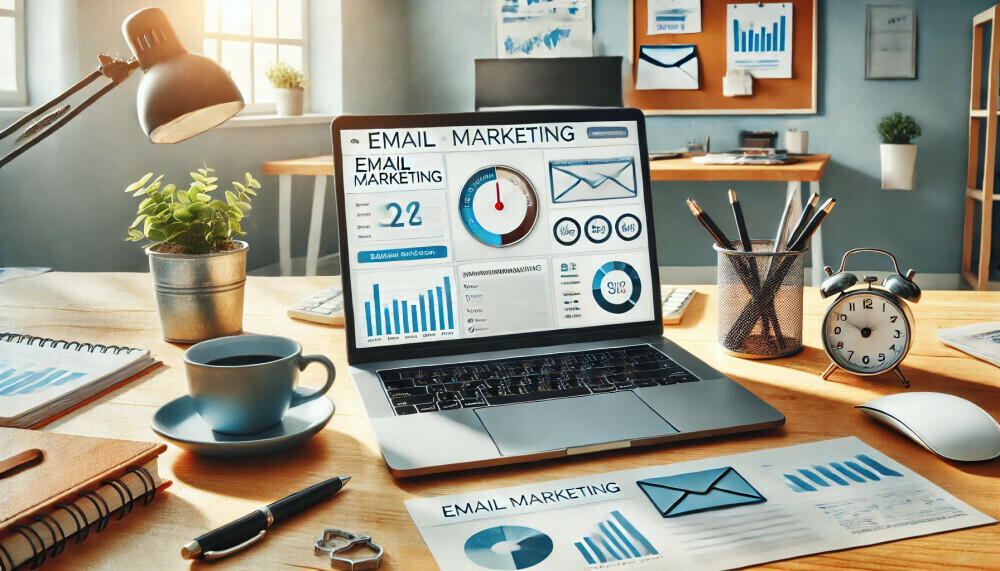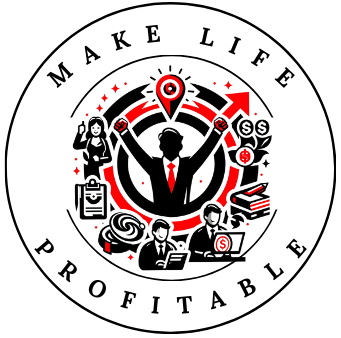Email marketing has stood the test of time, thriving even as new ways to communicate in our digital world emerge and evolve. This resilience and relevance stem from several key factors, which we’ll explore in detail.
Dissecting the Resilience and Relevancy of Email in the Digital Age

Despite the explosion of social media platforms and other digital communication tools, email marketing remains a cornerstone of successful digital marketing strategies. Its endurance can be attributed to its ability to adapt and integrate new technologies while maintaining its core strengths. Email allows for direct, personalized communication with an audience that has already shown interest in a brand, providing a level of engagement that other channels struggle to match.
Email marketing strikes a chord with many and it continues to do the job for which it was intended: to communicate and to help you grow your audience. In tomorrow’s article, we will look at how to create an email list.
Statistical Proof of Email Marketing’s Enduring ROI

Numbers don’t lie, and the statistics around email marketing’s return on investment (ROI) are compelling. Studies consistently show that for every dollar spent on email marketing, businesses can expect an average return of $42. This impressive ROI is driven by email’s ability to target specific segments of an audience with tailored messages, leading to higher conversion rates and more efficient use of marketing budgets.
That is power! If you can create an email list that goes out to even 100 people and you get a 20% open rate and even a 10% purchase rate, you are doing pretty good!
Comparing Channels: Email Marketing and Social Media Effectiveness
While social media is excellent for building brand awareness and engaging with a broad audience, it often falls short in converting followers into customers. Email marketing, on the other hand, excels in this area. Emails are more likely to be seen and engaged with because they land directly in a person’s inbox, whereas social media posts can get lost in the noise of crowded feeds. Furthermore, email marketing allows for a higher degree of personalization and can deliver a more consistent and measurable impact on a business’s bottom line.
Cultivating Relationships: Email Marketing as a Personalized Engagement Tool
One of the standout strengths of email marketing is its ability to foster personal connections with customers. Through personalized and segmented messaging, businesses can build stronger, more meaningful relationships with their audience.
Leveraging Personalization and Segmentation for Targeted Messaging
Personalization goes beyond just addressing recipients by their first name. It involves tailoring the content of emails based on user behavior, preferences, and past interactions. Segmentation further enhances this by grouping subscribers based on specific criteria, such as purchase history or engagement level. This targeted approach ensures that the right messages reach the right people at the right time, increasing the likelihood of engagement and conversion.
It does mean keeping track of things, but there are many email or CRM programs that can track and segment your email group(s).
Case Studies on Successful Relationship-Building Email Campaigns
Consider the case of a retail company that used segmentation to boost its email marketing effectiveness. By analyzing customer data, they identified several key segments and tailored their messaging accordingly. For example, they sent personalized product recommendations to frequent buyers and exclusive discounts to inactive customers to re-engage them. The result was a significant increase in open rates, click-through rates, and overall sales.
Strategies for Enhancing Customer Experience Through Email Interactions
To maximize the impact of email marketing, it’s crucial to focus on enhancing the customer experience. This can be achieved by:
- Ensuring emails are visually appealing and mobile-friendly
- Providing valuable content that addresses the needs and interests of subscribers
- Using clear and compelling calls to action (CTAs)
- Incorporating interactive elements, such as surveys or polls, to encourage engagement
At my “day job” I use a service that will create personalized emails that I can send to my clients based on the industry they are in or I can create a general email just to check in with my clients. Having this sort of program is very helpful in the advertising/sales department because it creates a more personal experience for my clients. They appreciate the extra time I put into the emails.
Email List Health: Maintaining a Robust and Responsive Audience
A healthy email list is essential for the success of any email marketing campaign. This involves regular maintenance and adopting best practices to ensure that your audience remains engaged and responsive.
Best Practices for Email List Hygiene and Management

Maintaining list hygiene involves regularly cleaning your email list to remove inactive or invalid email addresses. This helps improve deliverability rates and ensures that your emails are reaching the intended recipients. Some key practices include:
- Regularly removing hard bounces and unsubscribes
- Monitoring engagement metrics to identify inactive subscribers
- Using double opt-in methods to ensure that subscribers genuinely want to receive your emails
The Importance of Consent and Opt-In Methods in List Building
Building an email list with consent is not only a best practice but also a legal requirement in many jurisdictions. Using opt-in methods, where subscribers actively choose to receive emails, helps ensure a higher quality list and reduces the risk of spam complaints. Double opt-in methods, where subscribers confirm their email address after signing up, further enhance list quality and engagement.
Tools and Tactics to Analyze and Boost Email Engagement Metrics
To keep your email marketing efforts on track, it’s important to regularly analyze engagement metrics such as open rates, click-through rates, and conversion rates. Tools like Google Analytics, Mailchimp, and HubSpot can provide valuable insights into how your emails are performing and help identify areas for improvement. Tactics to boost engagement include A/B testing subject lines and content, optimizing send times, and continuously refining your segmentation and personalization strategies.
Integrating Innovation: Email Marketing in the Age of Automation and AI

The integration of automation and artificial intelligence (AI) in email marketing is transforming how businesses communicate with their audience. These cutting-edge technologies offer new opportunities to enhance user experience and drive better results.
When I am writing a short marketing email I will sometimes employ an AI tool like ChatGPT to help me spruce the email up. I tell it the basic information and the AI takes on the task and makes it engaging and fun. I have found I have a better ROI on those emails because they engage my clients better.
Exploring Cutting-Edge Email Technologies and Their Impact on User Experience
Innovations such as dynamic content, predictive analytics, and interactive emails are revolutionizing email marketing. Dynamic content allows for real-time personalization based on user behavior and preferences, while predictive analytics can forecast future behaviors and tailor messaging accordingly. Interactive emails, which include elements like carousels and embedded videos, provide a more engaging and immersive experience for recipients.
Automating for Efficiency: How AI Can Personalize Email Campaigns at Scale
AI-powered tools enable businesses to automate and scale their email marketing efforts without sacrificing personalization. Machine learning algorithms can analyze vast amounts of data to identify patterns and predict the best times to send emails, the most effective subject lines, and the most relevant content for each subscriber. This level of automation not only saves time but also increases the precision and effectiveness of email campaigns.
Future Predictions: Evolving Trends in Email Marketing and What to Expect

Looking ahead, we can expect several trends to shape the future of email marketing. These include:
- Increased use of AI and machine learning to enhance personalization and automation
- Greater emphasis on data privacy and compliance with regulations such as GDPR and CCPA
- Continued evolution of interactive and dynamic email content
- Integration of email marketing with other digital channels for a more cohesive and omni-channel approach
Email marketing remains a vital and dynamic tool for businesses looking to build strong relationships with their audience and drive ROI. By leveraging personalization, maintaining a healthy email list, and embracing new technologies, marketers can ensure that their email campaigns continue to thrive in the digital age. So, if you’re looking to maximize your affiliate marketing efforts, don’t overlook the enduring power of a well-crafted email strategy.

